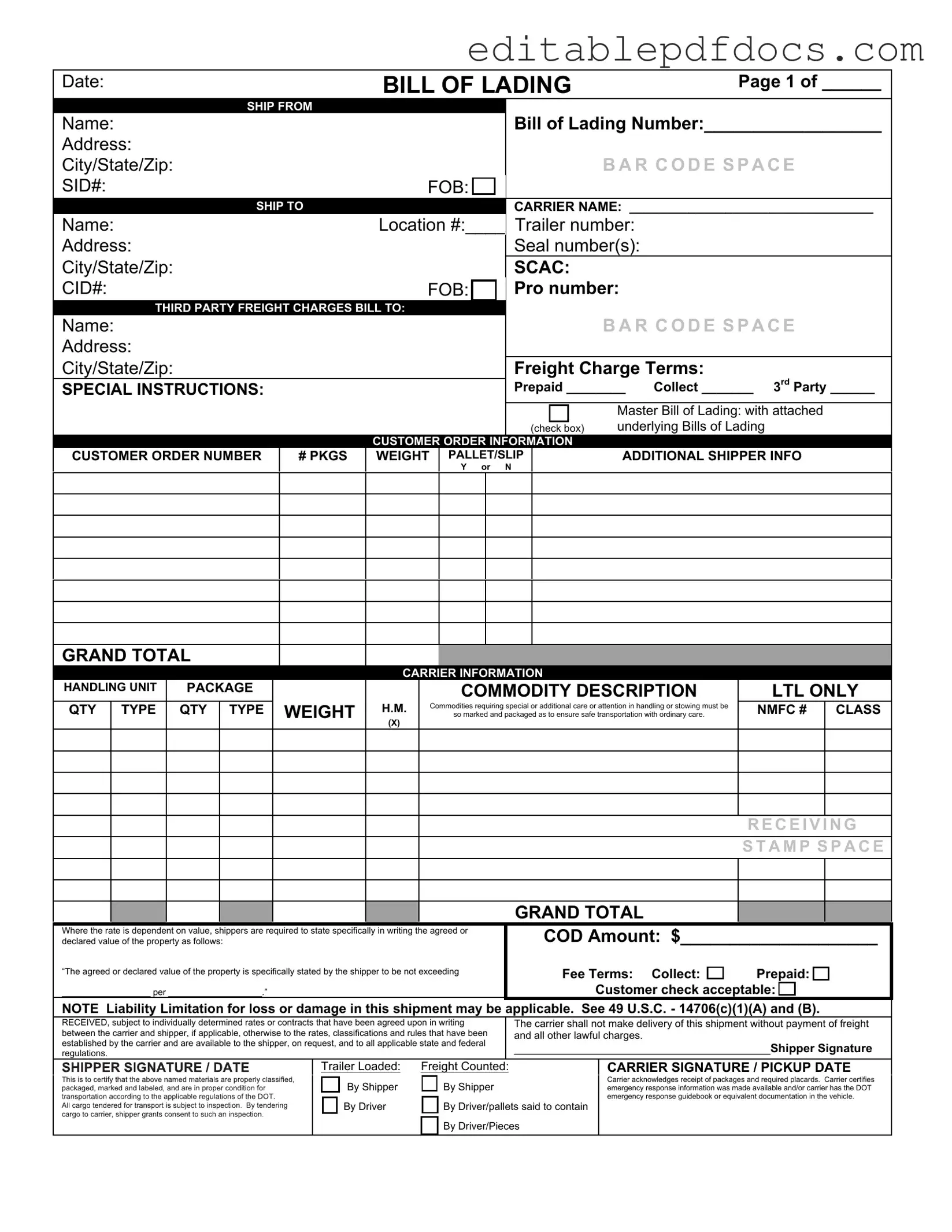Filling out a Bill of Lading with a Supplement form is a critical step in the shipping process. However, many individuals make mistakes that can lead to delays, misunderstandings, or even legal issues. One common error is providing incomplete information. When essential details, such as the consignee's address or the description of the goods, are missing, it can cause significant problems down the line.
Another frequent mistake involves incorrect weight or measurement entries. Accuracy is vital in shipping, and any discrepancies can lead to additional charges or disputes with carriers. Double-checking these figures before submission is essential to avoid complications later.
Many people also overlook the importance of proper signatures. A Bill of Lading must be signed by the appropriate parties to be valid. Failing to secure the necessary signatures can render the document ineffective, which may complicate the shipping process.
Additionally, some individuals neglect to review the terms and conditions associated with the Bill of Lading. Understanding these terms is crucial, as they outline the responsibilities and liabilities of all parties involved. Ignoring this aspect can lead to misunderstandings and disputes regarding liability in case of loss or damage.
Another mistake often made is using outdated or incorrect forms. Shipping regulations can change, and using an old version of the Bill of Lading can lead to compliance issues. It is important to ensure that the most current version of the form is being used to avoid any potential problems.
Lastly, failing to keep copies of the completed Bill of Lading with a Supplement form can create issues if disputes arise later. Retaining a copy provides a record of what was agreed upon and can serve as evidence if needed. Keeping thorough documentation is a best practice in any shipping process.
